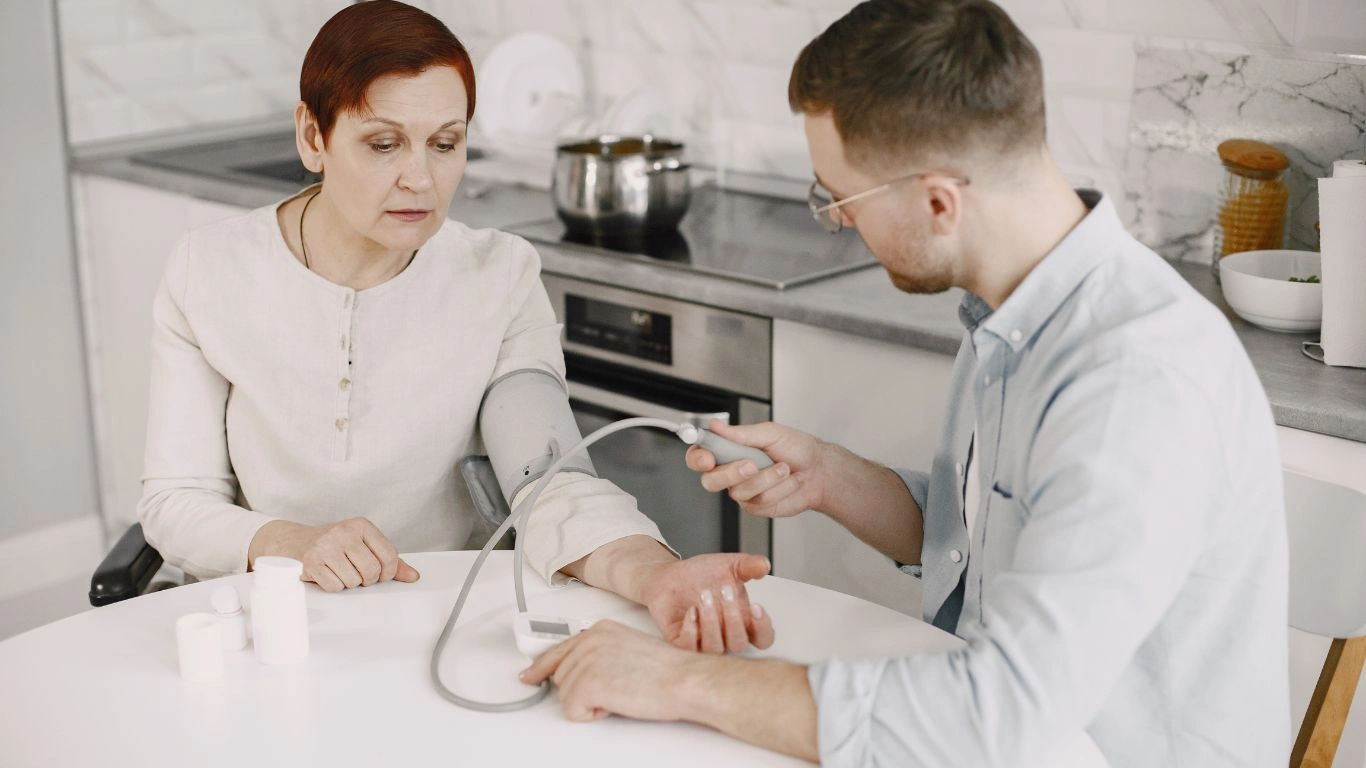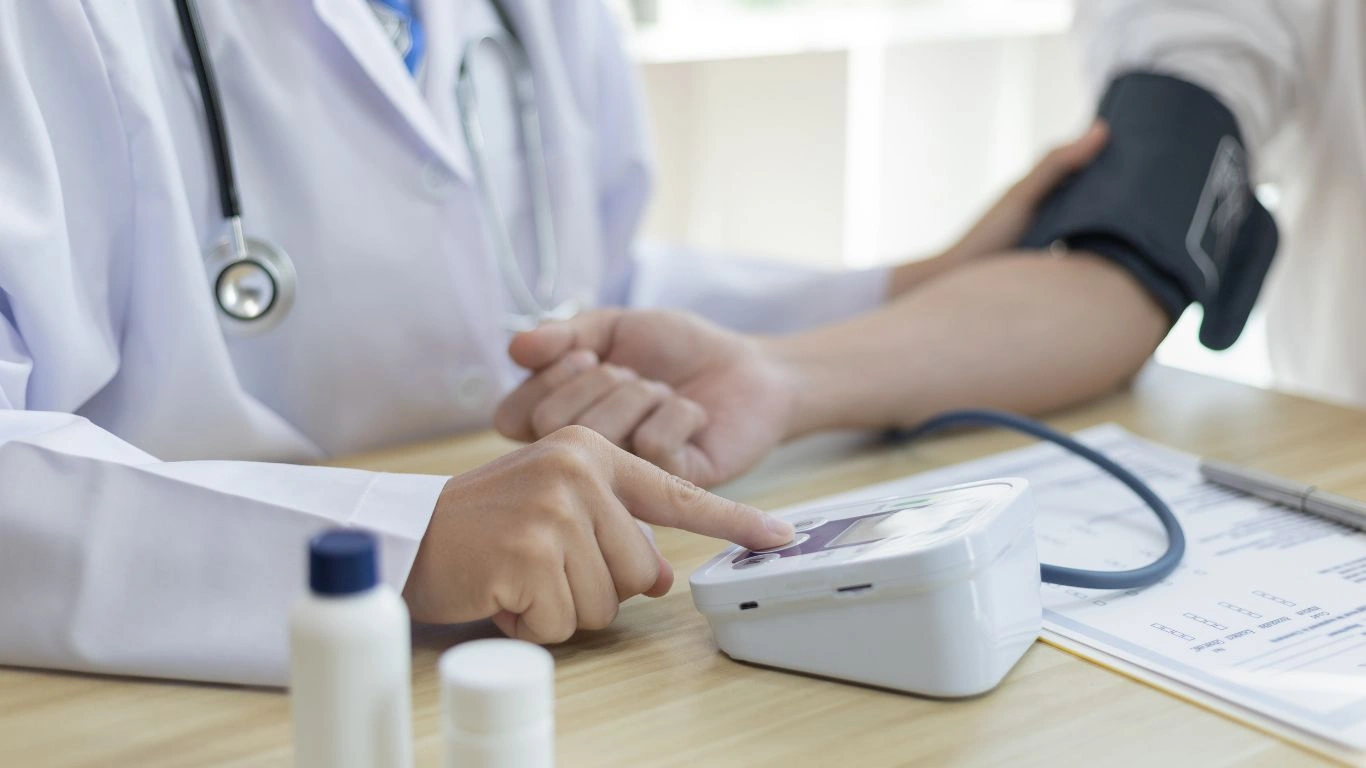How Cinnamon Helps Lower BP Naturally for Powerful Results
Let me start by saying — as an Internal Medicine physician who deals with hypertension day in and day out — I’m always on the lookout for *simple, practical* tools to help patients manage their blood pressure. You wouldn’t believe how many people ask me about natural remedies. And one that keeps popping up in conversations is cinnamon. Yes, that warm, sweet spice sitting in your pantry might actually do more than just jazz up your oatmeal. How cinnamon helps lower BP (blood pressure) isn’t just an old wives’ tale. There’s actual science behind it — and real-life success stories I’ve seen in clinic. So let’s dive into the flavorful world of cinnamon and explore how it might just become your heart’s new best friend.
Spice Up Your Health: The Cinnamon-Blood Pressure Connection

Cinnamon isn’t just delicious — it’s packed with powerful compounds like cinnamaldehyde, which is the secret sauce (well, technically, compound) behind its health benefits. What’s fascinating is how these compounds seem to relax blood vessels, reduce inflammation, and improve blood flow — all of which are critical when you’re managing high blood pressure.
Now, don’t get me wrong — I’m not saying you should toss your meds and start spooning cinnamon into your coffee. But adding this spice to your daily routine *could* be that extra edge you need, especially when combined with lifestyle changes.
So, how exactly does cinnamon help lower BP?
There are a few mechanisms at play, and as someone who pores over medical journals regularly (and not just for fun!), I can tell you the data is promising.
- Vasodilation: Cinnamon may help relax blood vessels, which lowers resistance and allows blood to flow more freely.
- Anti-inflammatory effects: Chronic inflammation can drive up blood pressure. Cinnamon’s natural anti-inflammatory properties help calm things down.
- Blood sugar balance: This one surprises a lot of folks, but stabilizing blood sugar indirectly supports healthy blood pressure. Cinnamon helps here too.
- Antioxidant power: Free radicals wreak havoc on blood vessels. Cinnamon’s antioxidants help mop those up.
I had a patient — let’s call her Mrs. R — who was pre-hypertensive and skeptical about medication. We worked together on diet, and she started incorporating half a teaspoon of cinnamon into her smoothies. Three months later, her BP was down 8 points. Was it all cinnamon? Probably not. But did it help? I believe so.
The Science Backs It Up

Let’s get nerdy for a second. Clinical research shows that cinnamon supplementation — typically around 1.5 to 2 grams per day — can lead to modest reductions in both systolic and diastolic blood pressure. One meta-analysis published in the *Journal of Clinical Hypertension* found that cinnamon had a significant impact in people with type 2 diabetes and metabolic syndrome. That lines up with what I see in my practice — patients with insulin resistance seem to respond especially well.
But keep this in mind: not all cinnamon is created equal. The common grocery store variety, *Cassia cinnamon*, contains higher levels of coumarin, which can be harmful in large amounts. If you’re using it regularly, opt for *Ceylon cinnamon* — also called “true cinnamon.” It’s a bit more expensive, but much safer for long-term use.
How Much Cinnamon Should You Use?
This is the question I hear all the time. Generally, small doses — around 1/2 to 1 teaspoon daily — are considered safe for most people. Here’s a simple breakdown:
- Start with 1/2 teaspoon per day.
- Use ground Ceylon cinnamon when possible.
- Mix into smoothies, oatmeal, coffee, or yogurt for easy daily use.
Quick tip from my kitchen: stir cinnamon into unsweetened applesauce — it’s delicious and feels like dessert!
Who Should Be Cautious?

As much as I love cinnamon, I also know not everyone should jump in headfirst. If you’re taking blood thinners or have liver issues, check with your doc first. Also, some people can be sensitive to coumarin, especially if they’re overdoing it with Cassia cinnamon.
And just to emphasize: cinnamon is not a substitute for medical treatment. Think of it as part of a broader toolkit — alongside diet, exercise, and yes, sometimes medication — to support cardiovascular health.
Simple Ways to Work Cinnamon Into Your Daily Routine

Okay, so now that we’ve unpacked how cinnamon helps lower BP, you’re probably wondering, “Alright Gwenna, but how do I *actually* use it day to day without getting bored?” Great question. The beauty of cinnamon is that it’s versatile — you can sneak it into both sweet and savory meals without needing to overhaul your entire diet.
Here are some super doable ways I’ve personally used — and recommended to patients — to get that heart-loving cinnamon boost:
- Morning coffee or tea: A pinch of ground cinnamon adds a cozy kick and keeps blood sugar in check.
- Overnight oats: Stir in a teaspoon with chopped apples or bananas. Tastes like dessert. Seriously.
- Homemade spice blends: Mix cinnamon with turmeric and ginger — sprinkle over roasted veggies or rice bowls.
- Greek yogurt parfaits: Layer it with berries and a dusting of cinnamon for a nutrient-rich breakfast or snack.
- Soups and stews: Yep, cinnamon works well in savory dishes too — especially Moroccan or Middle Eastern-style recipes.
One patient of mine got creative and started mixing cinnamon into peanut butter for her afternoon apple slices. Not only did it taste amazing, but she also felt fuller longer — likely due to cinnamon’s ability to help regulate blood sugar swings.
Real Talk: What to Expect (and What Not To)

I always tell my patients: don’t expect miracles overnight. Cinnamon is not some kind of blood pressure “reset” button. It’s more like a quiet helper — working behind the scenes to make other changes (like diet, weight loss, sleep) more effective.
Here’s what I’ve seen in clinic when people stick to cinnamon regularly (combined with a heart-healthy plan):
- Modest reductions in systolic and diastolic BP over a few months.
- Better post-meal blood sugar numbers (especially in folks with insulin resistance).
- Less reliance on extra salt and sugar due to cinnamon’s naturally sweet and aromatic profile.
And listen — I’ve had folks get frustrated when their numbers don’t drop right away. That’s completely normal. But I always remind them: this is about long-term gains. Cinnamon is one tool among many. It’s not flashy, but it’s consistent — and consistency is where real health wins happen.
Let’s Talk About Quality and Dosage (Because It Matters)

We touched on this in Part 1, but it’s worth diving a little deeper into the cinnamon aisle. The type you choose matters more than you think. Trust me — I’ve had patients down tablespoons of the cheap stuff thinking more is better. It’s not.
Ceylon vs. Cassia: Know the Difference
Cassia cinnamon is more common and budget-friendly, but it also contains more coumarin — a compound that can stress your liver in high doses. Ceylon cinnamon (sometimes labeled “true cinnamon”) is milder, slightly sweeter, and much lower in coumarin. It’s definitely my go-to recommendation for regular, daily use.
How Much Is Safe?
The sweet spot for most adults is about 1/2 to 1 teaspoon per day. That’s enough to enjoy the benefits without pushing the limit. Here’s a quick reference:
- Low dose (1/4 tsp): Good starting point if you’re new to cinnamon or sensitive to spices.
- Moderate (1/2 tsp): Ideal for maintenance and safe for long-term use.
- High end (1 tsp+): Okay for short periods, but only if using high-quality Ceylon.
And remember: don’t add it to everything under the sun just to hit a number. It’s about balance. I usually suggest pairing it with meals that already support heart health — think fiber-rich breakfasts, lean proteins, and dishes with healthy fats.
Can Cinnamon Interact with Medications?

As a physician, I’d be remiss if I didn’t talk about possible interactions. Even though cinnamon is natural, it’s not neutral. Here are a few things to keep in mind:
- Blood thinners: Cinnamon has mild blood-thinning properties. If you’re on warfarin, aspirin, or similar meds, chat with your doc before diving in.
- Diabetes meds: Since cinnamon can lower blood sugar, you’ll want to monitor closely to avoid hypoglycemia if you’re on glucose-lowering drugs.
- Liver conditions: High doses of Cassia cinnamon are a no-go for anyone with compromised liver function.
I once had a patient on both metformin and a sulfonylurea who began cinnamon supplements. She started getting shaky mid-morning. We adjusted her meds slightly and her energy and BP improved. Moral of the story: keep your healthcare provider in the loop.
So, yes — cinnamon is powerful. But like anything in medicine, the key is context, personalization, and a little common sense.
Integrating Cinnamon Into a Holistic Blood Pressure Strategy

By now, you’ve got a good sense of how cinnamon can be a helpful little addition in managing blood pressure, but here’s the truth — it’s never just one thing. High blood pressure is complex, and managing it well means thinking about your whole lifestyle. From my years in internal medicine, I’ve seen that combining natural approaches with evidence-based medical care is the winning formula.
Here’s what I always recommend alongside cinnamon for those aiming to keep their blood pressure in check:
- Nutrition: Prioritize whole foods rich in potassium, magnesium, and fiber. Think leafy greens, berries, nuts, and legumes.
- Exercise: Even moderate aerobic activity, like walking 30 minutes a day, helps relax blood vessels and improve heart health.
- Stress management: Chronic stress pumps up your blood pressure. Techniques like meditation, deep breathing, or yoga can make a big difference.
- Sleep hygiene: Aim for 7–8 hours of quality sleep. Poor sleep worsens hypertension and overall cardiovascular risk.
- Medication adherence: If you’re prescribed blood pressure meds, stick with them — cinnamon is an aid, not a replacement.
One of my favorite patient success stories involves a gentleman in his 60s, Mr. J, who was struggling with stubborn hypertension despite medication. When he added cinnamon daily and started walking regularly, his blood pressure started trending downwards, allowing us to reduce his medication dose gradually. That’s the kind of synergy that makes this journey worthwhile.
Addressing Common Questions About Cinnamon and Blood Pressure

Can cinnamon replace blood pressure medication?
Short answer: no. In my clinical experience and backed by medical guidelines, cinnamon should be viewed as a supportive tool rather than a substitute for prescribed treatments. High blood pressure can lead to serious complications if untreated, so never stop or reduce your meds without consulting your doctor.
Is cinnamon safe for everyone?
Generally, yes — but as mentioned earlier, if you have liver issues, take blood thinners, or are pregnant, it’s wise to check with your healthcare provider first. Moderation is key, and choosing Ceylon cinnamon can minimize risks.
How soon will I notice a difference?
Everyone’s different. Some people notice small improvements in a few weeks, while others may take a couple of months to feel any effect. Remember, cinnamon’s benefits accumulate over time as part of a heart-healthy lifestyle.
Are cinnamon supplements better than the powder?
Supplements can be convenient, but quality control varies widely. I prefer recommending ground Ceylon cinnamon from trusted brands, where you can see the label and dosage clearly. If you do go for supplements, choose products that are third-party tested.
Wrapping Up My Take on Cinnamon and Blood Pressure
As a doctor, I always strive to provide guidance that balances science with practicality. Cinnamon’s ability to lower blood pressure might seem like a small thing, but small things add up. Incorporating cinnamon into your diet — thoughtfully and safely — can be a flavorful, natural way to support your cardiovascular health.
While it’s exciting to explore natural remedies, the cornerstone of managing hypertension remains regular medical checkups, lifestyle adjustments, and adherence to prescribed therapy. Think of cinnamon as a friendly helper on your journey, not the whole road.
If you’re curious about making lifestyle changes or need personalized advice, reach out to your healthcare provider — no one knows your health story better than you and your doctor.
References
Disclaimer
This article is for informational purposes only and does not replace professional medical advice, diagnosis, or treatment. Always consult your healthcare provider before making any changes to your medication or lifestyle, especially if you have underlying health conditions or are pregnant or breastfeeding. The author and publisher disclaim any liability or responsibility for any actions taken based on the information provided.

Dr. Gwenna Aazee is a board-certified Internal Medicine Physician with a special focus on hypertension management, chronic disease prevention, and patient education. With years of experience in both clinical practice and medical writing, she’s passionate about turning evidence-based medicine into accessible, actionable advice. Through her work at Healthusias.com, Dr. Aazee empowers readers to take charge of their health with confidence and clarity. Off the clock, she enjoys deep dives into nutrition research, long walks with her rescue pup, and simplifying medical jargon one article at a time.





